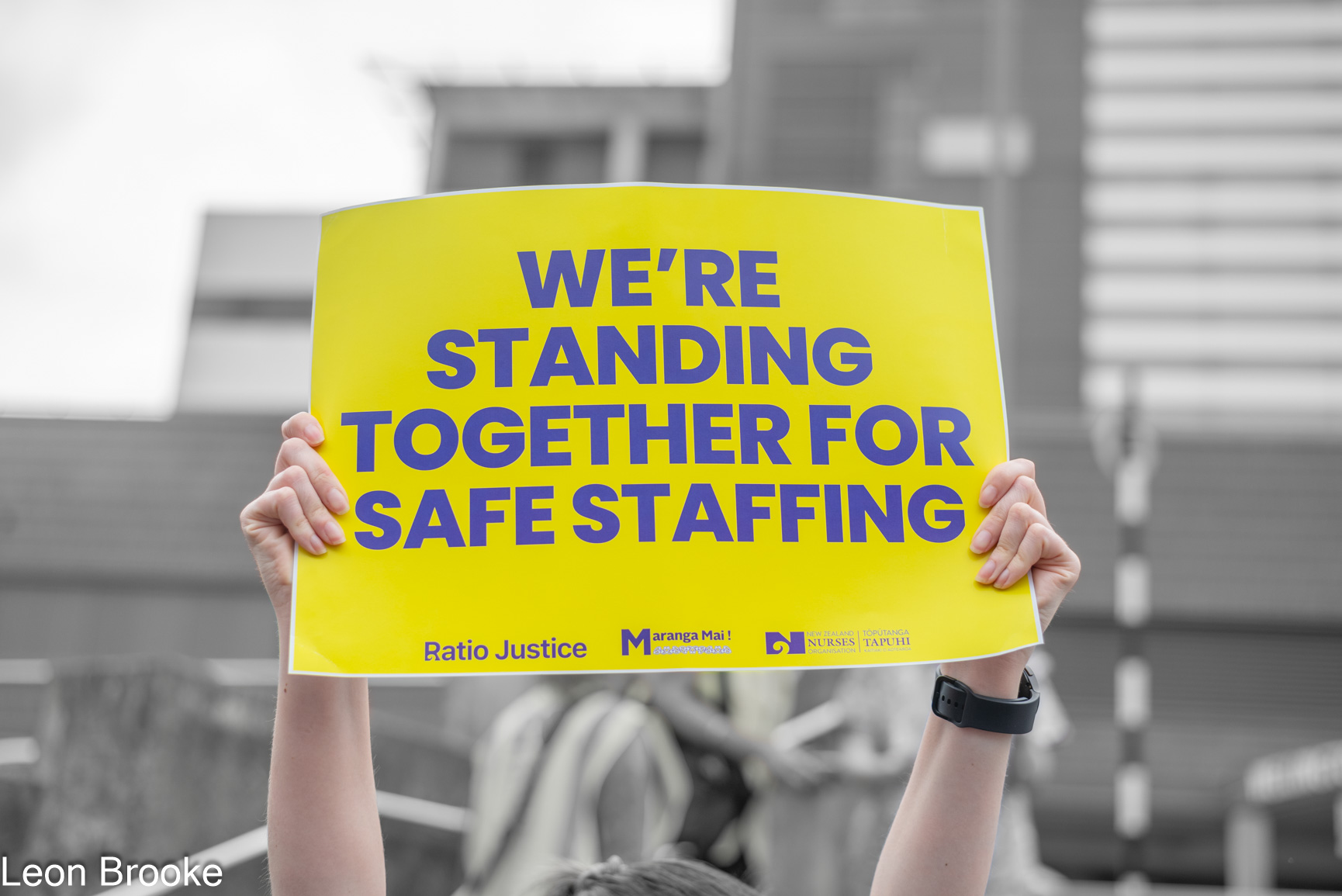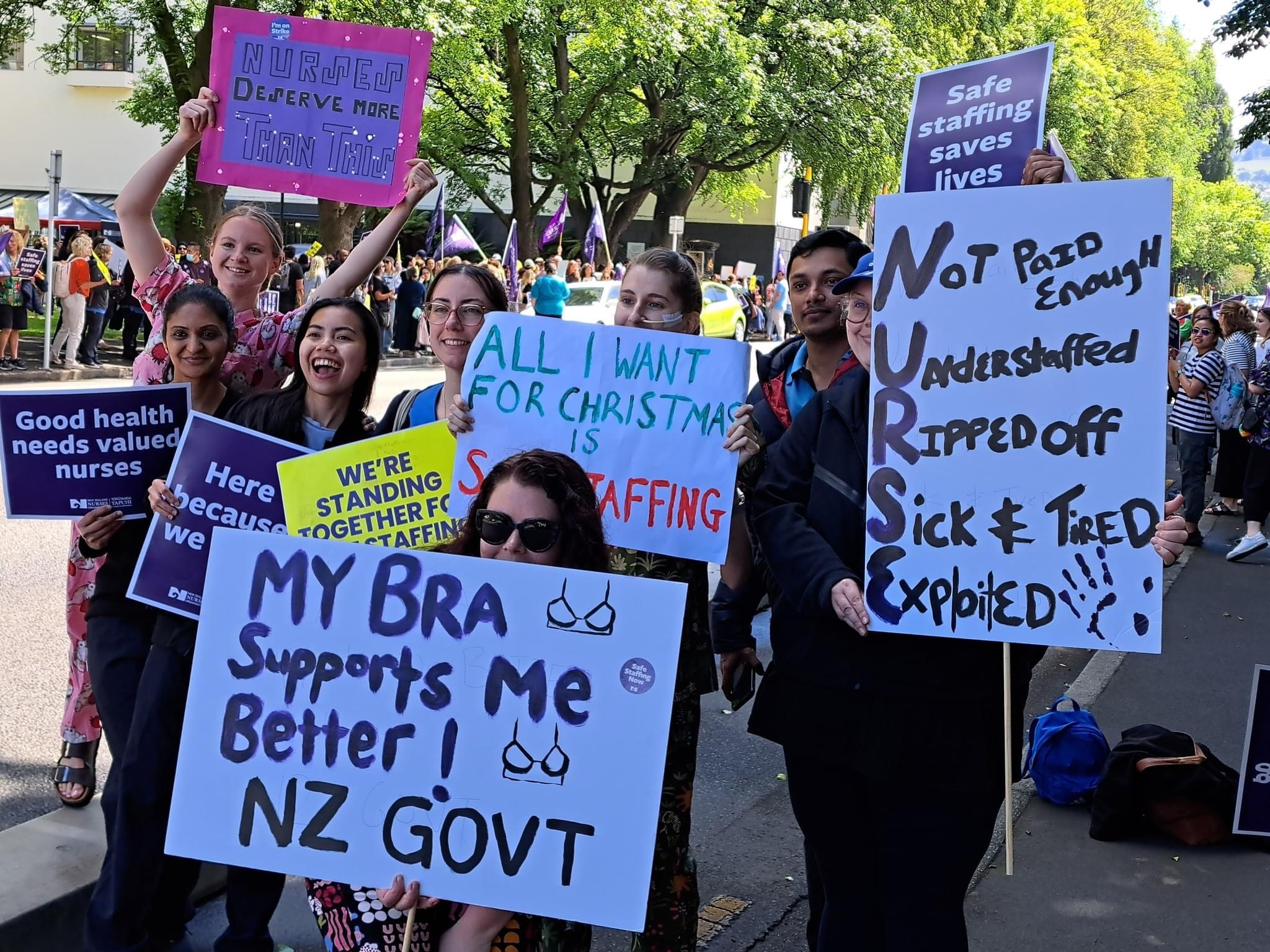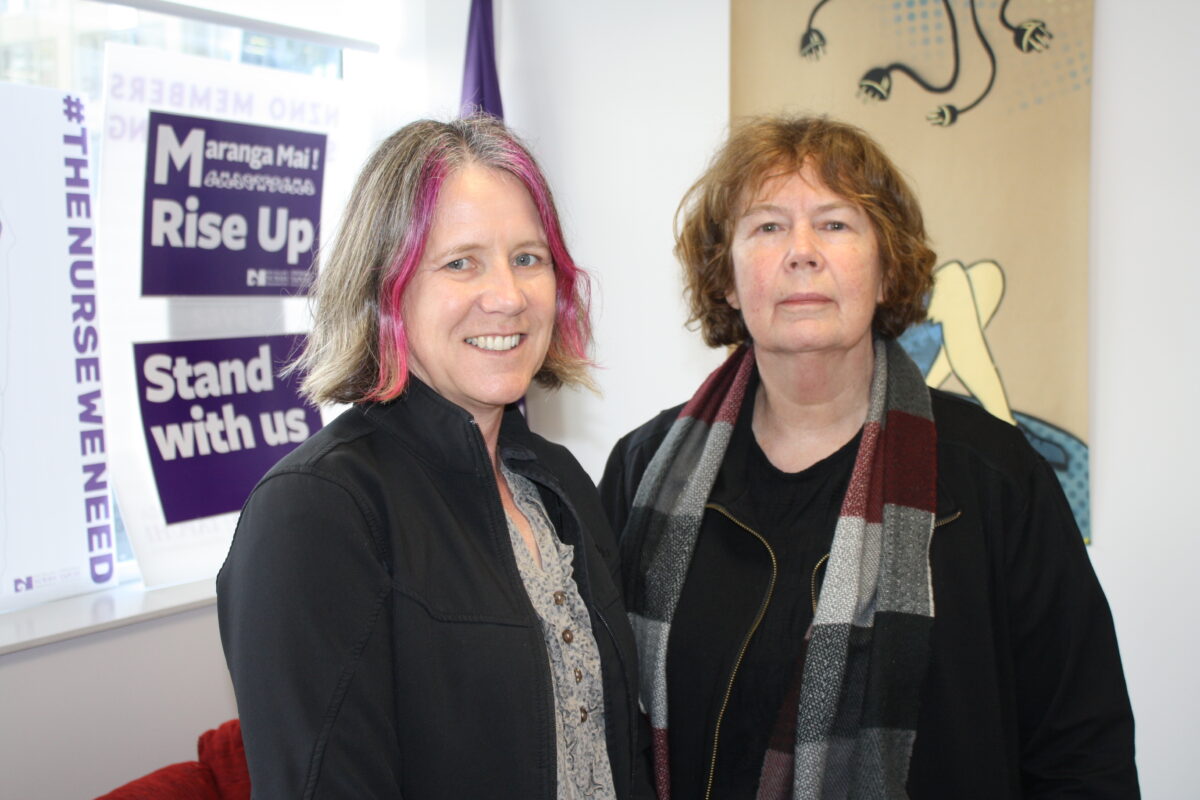At a glance: NZNO’s bicultural elections
In NZNO’s bicultural leadership model, the president and vice-president govern alongside the kaiwhakahaere and tumu whakarae, who are elected by members of NZNO’s Māori member body, Te Rūnanga, every three years. The president and vice-president can serve no more than two three-year terms, while the kaiwhakahaere and tumu whakarae may serve more than two consecutive terms.
At the NZNO hui-a-tau in August, Kerri Nuku was elected unopposed as kaiwhakahaere for a 11th year while Whakatāne nurse Tracy Black was also unopposed to replace Titihuia Pakeho as tumu whakarae, after Pakeho stepped down.
Their profiles will run next week.
Safe staffing and stronger community health care are top of the list for returning NZNO-Tōpūtanga Tapuhi Kaitiaki o Aotearoa leaders, president Anne Daniels and vice-president Nano Tunnicliff.
“For the next three years, safe staffing is absolutely my priority,” Daniels said. She believed this could be achieved with legally-binding nurse-patient ratios underpinned by safe staffing tool care capacity demand management CCDM — fully embedded not only in hospitals but primary health and aged care.
Daniels, a long-time emergency nurse based in Ōpotiki (Dunedin), retained the presidency in September’s election despite a challenge from college of primary health care nurses’ chair Tracey Morgan.
Tunnicliff — who was re-elected unopposed — said a well-funded primary health system was also crucial.
“Primary health care is normally your ‘in’ to the system. If that’s well funded and resourced, which it’s not, you will have less pressure on the hospital as people are picked up much earlier in their journeys.”
‘We expect nurses to be able to go to work and do their job safely in a way that is expected by themselves and by the public.’
Daniels said NZNO had been trying to get a safe level of nurses in workplaces for 23 years — since 2001. Even with CCDM data now able to show exactly how many nurses were needed in many hospitals — and a 2018 safe staffing accord — nurses and kaiāwhina were still stuck in unsafe environments.
“How many times do we have to say this?” Daniels says, with evident frustration. “We expect nurses to be able to go to work and do their job safely in a way that is expected by themselves and by the public.”

The focus had now shifted to getting legally-enforceable safe nurse-to-patient ratios as there was so little trust in Te Whatu Ora or the Government to keep their word.
CCDM was still not fully implemented anywhere — and even where it was, Te Whatu Ora was keeping its calculations secret, Daniels said.
“If they are actually being transparent and accountable, why will they not release the actual CCDM FTE [full-time equivalent staffing shortfall]?”
Last year, it revealed that a quarter of nursing shifts were understaffed — but only after it was forced to release them to NZNO through the Official Information Act.
Te Whatu Ora has so far declined to release 2024 figures.
‘In my long nursing career, this is the worse I’ve ever encountered in terms of hammering the frontline.’
Another focus for Daniels — and NZNO’s Maranga Mai! strategy — was embedding te Tiriti o Waitangi in “everything we do so it’s normalised in who we are as a union and profession”.
Workload ‘double’ while vacancies grow
Tunnicliff, who works on a medical ward in the Wellington region, agreed nurse understaffing was NZNO’s biggest challenge.
Workload had doubled in the past couple of years, yet nurse numbers were not keeping up.
“It’s getting quite stressful, the environment, and noticeably the sick leave has escalated.”
A lack of workforce planning was evident — for example the Government had funded new cancer drugs but no workforce to administer them.
“It means we have to now pick up some of the slack around patient education – it takes a lot longer. Then you’re going from a load of four to six, seven, eight [patients] in a day but still within the same opening hours.”
Nurses needed to be employed according to need — which CCDM could now identify — rather than budget, she said. However, Te Whatu Ora would not release their staffing figures and appeared to be taking a budget-driven approach amid a drive to save $1.4 billion, she said.
‘So it doesn’t matter if they’ve got 10 vacancies, they can only approve two that will then possibly be advertised.’
“We now have a tool that can at least build in manageable workload and reflects the FTE you actually require. But then you have to get that all approved before management can then advertise and fill those vacancies,” she said.
Nurses seeing ‘worsening outcomes’
And what nurse managers were successfully getting approved, fell far short of what was needed.
“So it doesn’t matter if they’ve got 10 vacancies, they can only approve two that will then possibly be advertised – and then that recruitment process that doesn’t happen overnight.”
She said “basic maths” suggested even though Te Whatu Ora had hired 2900 FTE nurses over the past year, its own figures identifying a 4800 nursing shortfall last year, meant New Zealand was still at least 1900 nurses short.
Nurses were seeing “worsening outcomes” as a result of the hiring constraints, said Tunnicliff, who has worked as a nurse for 36 years.
“Patients will die. . . In my long nursing career, this is the worse I’ve ever encountered in terms of hammering the frontline.”

Both said more resourcing for nurses in communities — primary health and aged care — would also take pressure off hospitals.
“Not just in GP practices, but in people’s homes, their communities, on the marae, in schools and universities — everywhere, outside of those hospital buildings. If that happened, we would not have the pressure that is occurring today,” Daniels said.
NZNO’s guiding strategy Maranga Mai! identified the problems and solutions, she said. They were: A te Tiriti-led approach that worked for Māori, safe staffing, paying all nurses the same, more Māori and Pacific nurses and more affordable and accessible training.
- Since this interview, Te Whatu Ora has paused its CCDM FTE calculations citing regional inconsistencies.
- See also Profiles: Māori nursing leaders Kerri Nuku and Tracy Black fight attacks.




